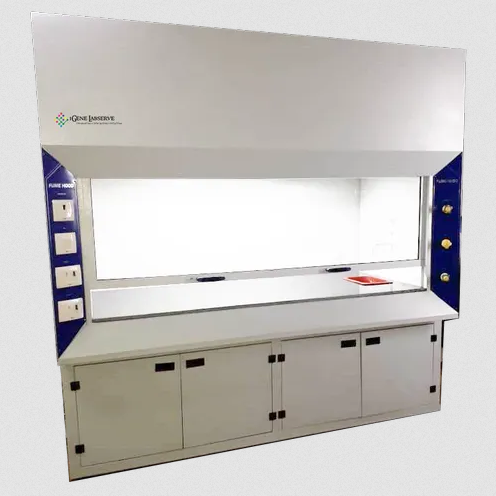
A laboratory fume hood is an equipment or chamber devices that allows the harmful gas to stay inside the hood. Once you want to utilize the fume hood, remember to understand all the ways how it works and what functions it delivers.
What is a fume hood?
An enclosure that is ventilated and where gases, vapors, and fumes are collected and evacuated from the work area is called a fume hood. The air and airborne pollutants are drawn through associated ducting by an exhaust fan that is located on top of the laboratory building and released into the atmosphere.
How does it work?
The conventional Laboratory Fume Hoods has an inner baffle and a moveable front sash. The sash can move vertically, horizontally, or in a mix of the two depending on how it is made, and it offers some protection to the hood user by serving as a partition between them and the experiment.
The air is directed via holes and baffles inside the hood, many of which may be changed to provide the most balanced flow. By storing too much material or having too much equipment, the baffles might get obstructed, which has a negative impact on the exhaust stream inside the hood and, consequently, the effectiveness of hood capture.
By removing abrupt curves to lessen turbulence, the airfoil, a beveled frame surrounding the hood face, enables uniform air flow into the hood.
Types of Fume Hood
Two basic type of fume hood are:
Constant volume – when there is a continuous exhaust flowrate or airflow through the hood. When the sash is lowered in this configuration, the cross-sectional area of the hood opening lowers, and as a result, the face velocity of the airflow through the hood increases proportionately. As a result, as the sash is lowered, the air velocity at the hood face increases.
Variable air volume (VAV) – When the sash is raised or lowered in order to maintain a consistent face velocity, the exhaust flowrate, or the amount of air drawn through the hood, changes. Since the face velocity of the air flowing through the hood remains constant when the sash is lowered and the cross-sectional area of the hood opening lowers, the amount of air that must be vented overall is decreased.
Functions of Fume Hood
Fume hood usage depends on the type of experiment being conducted and the laboratory’s environment, thus it’s important to follow safety and operation procedures while using one. The following fume hood functions are necessary in order to guarantee that safety measures are established.
Unchangeable Function
This feature permits a fume hood to stop any dangerous gas released from the chamber from returning into the room. The best approach to assure operation is to connect the hood and ventilation fan using a single pipe.
Releasing
This function of the fume hood helps to thin out the harmful gas emerging from the chamber. This process efficiently discharges outside of chamber by absorbing gas present outside.
Insulation
One of the functions of a fume hood is to provide insulation outside and inside of the chamber with the help of a sturdy glass window in front.
If you want to learn everything there is to know about a laboratory fume hood, get in touch with IGene Labserve by going to https://www.igenels.com/ or dial 09310696848 to know more.